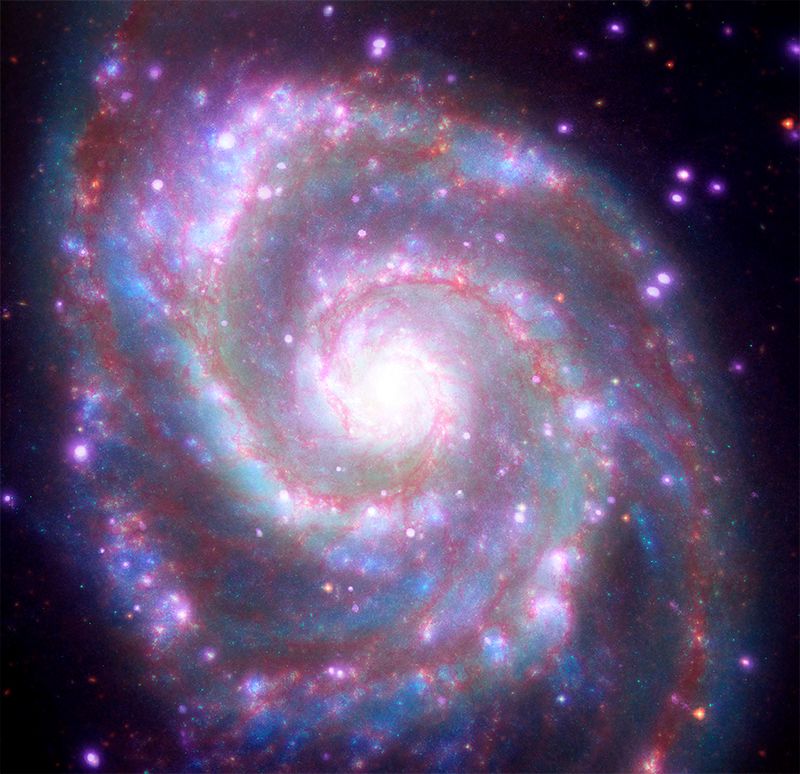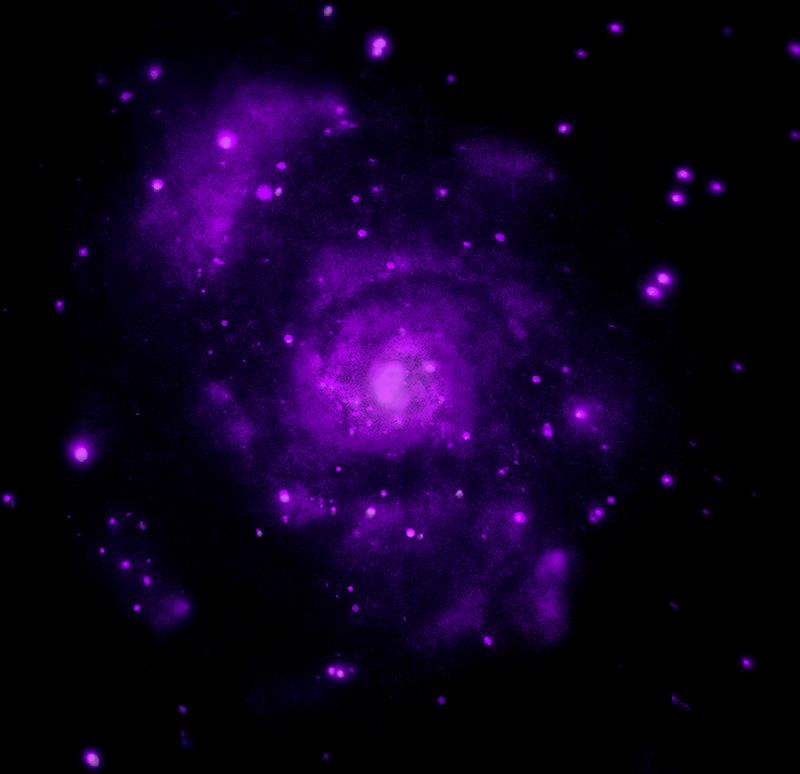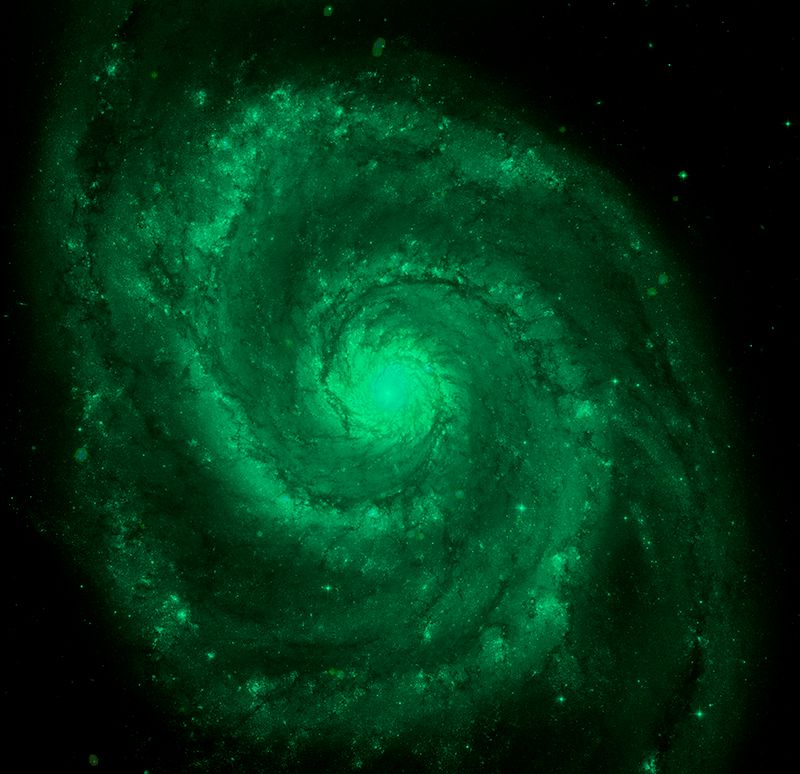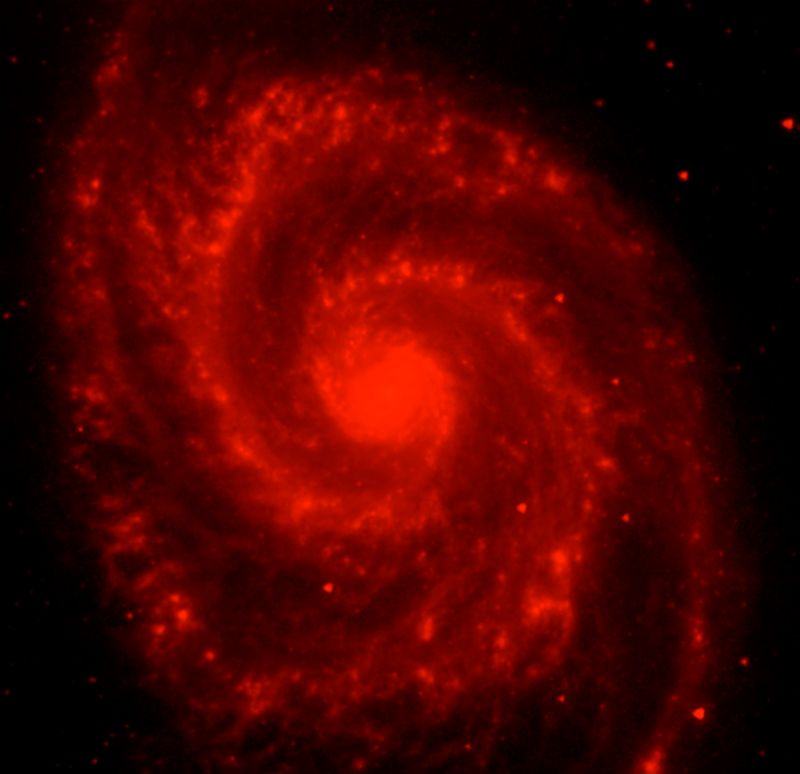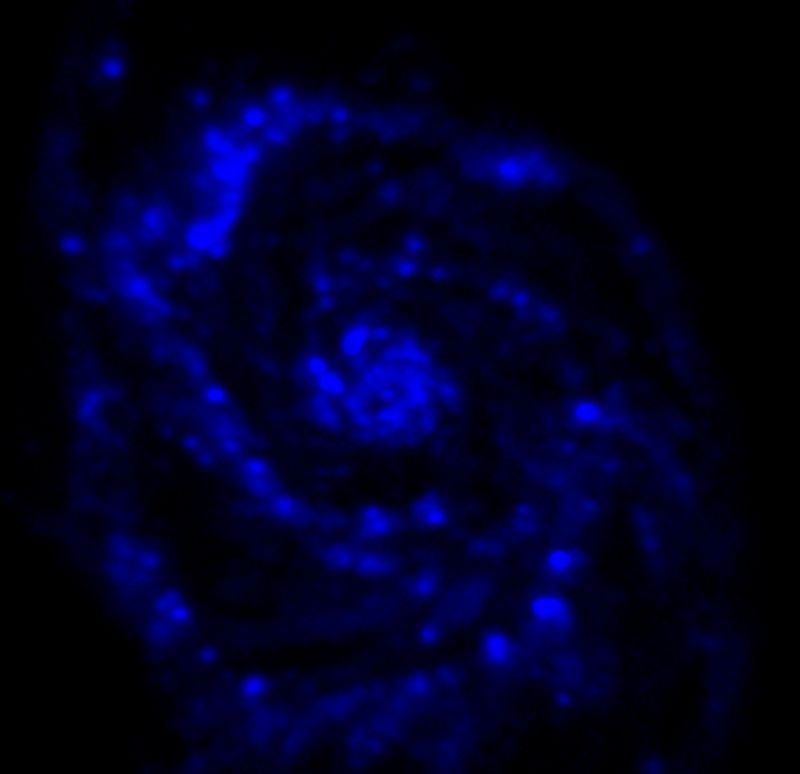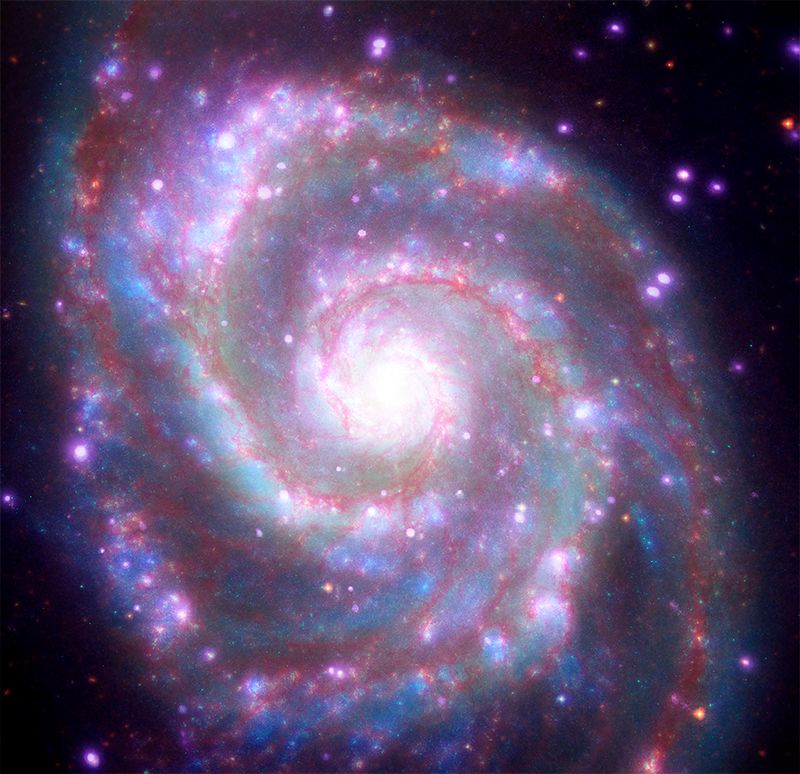
M51 Sonification
Messier 51 (M51) is perhaps better known by its nickname of the Whirlpool Galaxy because its face-on orientation to Earth reveals its wound-up spiral arms. This gives telescopes here a view of another spiral galaxy similar to our Milky Way, whose structure we cannot observe directly from our position within it. As with the Cat's Eye, the sonification begins at the top and moves radially around the image in a clockwise direction. The radius is mapped to notes of a melodic minor scale. Each wavelength of light in the image obtained from NASA telescopes in space (infrared, optical, ultraviolet, and X-ray) is assigned to a different frequency range. The sequence begins with sounds from all four types of light, but then separately moves through the data from Spitzer, Hubble, GALEX, and Chandra. At wavelengths in which the spiral arms are prominent, the pitches creep upwards as the spiral reaches farther from the core. A constant low hum associated with the bright core can be heard, punctuated by short sounds from compact sources of light within the galaxy.
Access more information & file formats on this sonification
The Chandra sonifications were led by the Chandra X-ray Center (CXC), with input from NASA's Universe of Learning. The sustained collaboration was driven by visualization scientist Dr. Kimberly Arcand (CXC), astrophysicist Dr. Matt Russo and musician Andrew Santaguida (both of the SYSTEM Sounds project). For other sonifications, please see their linked pages.
cxcpub@cfa.harvard.edu
617-496-7941
60 Garden Street,
Cambridge, MA 02138 USA
Art Direction/Design: Kristin DiVona
Web Developers: Khajag Mgrdichian
& Kelly T.S. Williamson
Chandra X-ray Center, Operated for NASA by the Smithsonian Astrophysical Observatory. This site was developed with funding from NASA under contract NAS8-03060 | Privacy | Accessibility
Additional support from NASA's Universe of Learning (UoL). UoL materials are based upon work supported by NASA under award number NNX16AC65A to the Space
Telescope Science Institute, working in partnership with Caltech/IPAC, Jet Propulsion Laboratory, and Smithsonian Astrophysical Observatory.

